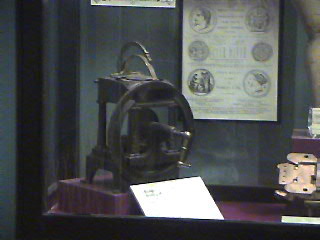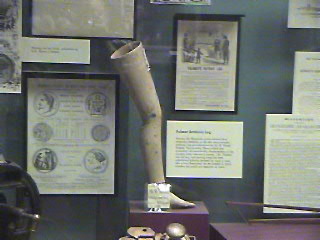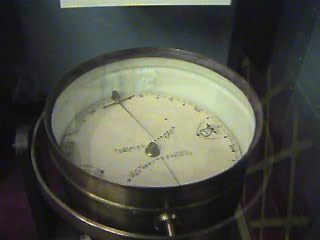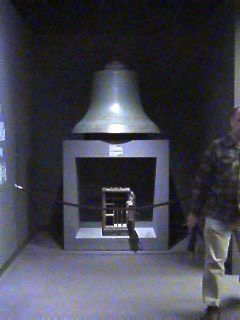| Page 6 of our Adventures |
| Welcome to the Smithsonian American History Museum. We did cover a lots of sections in here but not all of them. We hope you enjoy what Pictures we did get. The best part of this is saved for last. |

Benny beside a 1967 Grand Prix Convertible |
 Ed beside a 1967 Grand Prix Convertable |

A Classic Piano
|

Bond Astronomical Time Keeper William Bond and Sons were among the leading clock and instrument makers of the 19th-century America. They were famous both for their marine chronometers and their ingeniously designed precision clocks. |

Blodgett and Lerow Sewing Machine Sherman C. Blodgett and John A Lerow were among the many American inventors and manufacturers who contributed to the development of a practical sewing machine. One of the commercial machines based on their 1849 patent won a medal at the Crystal Palace.
|

The Palmer Artificial Leg. Among the American prize winners that attracted attention at the fair was a sample of a artificial leg manufactured by DR. Frank B. Palmer. The London Times called this invention "so remarkably characteristic of whence the country it comes...(Dr Palmer) lost his leg, and having tried the best substitutes hitherto devised for such a case, like a true American, He set himself to think whether or not he could not improve on them.
|

ST John Nautical Compass The Nautical Compass was one of many of inventions of John Ransom St John, a jack of many trades who worked as a printer, surveyor and a engineer. He patented it in 1852, and moved from Buffalo to New York City to manufacture it. St John's compass was designed to find magnetic north on a ship heavy with iron, was ingenious but basically impractical. Even thou it won a prize medal at the Crystal Palace and a gold medal from the American Institute in New York, the compass never achieved commercial sucess. |

The Labor and Capitol The factory bell and the office sale are revealing symbols of the American Industrial Revolution. They stand for the new discipline of industrial work and the search for wealth by means of technology and industry. This factory bell hung in the bell tower of the Continental Mill, a Textile mill in Lewiston, Maine from about 1867 to 1963. The sale was made about 1841. |

Howe's and Singer's Sewing Machines. Many inventors contributed to the development of the sewing machine. Historians have generally given primary credit for it's invention to Elias Howe JR. The machine he patented on September 10,1846, used an eye-pointed needle and shuttle to form a stitch- but it could only sew a short, straight seam under very restricted conditions. At first , Howe did not manufacture machines, but made his fortune through royalties and payment from his frequent patent. |

Needle Workers Cabinet, 1857 Women and Men alike take pride in the tools they use. This finely crafted chest celebrates the Needle worker's skills. The elegant interior of the needle worker's home probably dictated the ornate detailing of this chest. |

Urologists Surgical Case, 1830's The ornate of finish tools and tool chests often serves no functional purpose. Accurately or not, the elaborate finish of this surgical instrument chest attested to it's owners education and worldly sophistication and reinforced a sense among his patients that they are in competent hands. These surgical tools made by the French instrument maker Joseph Charriere, were owned by DR William Wilson of Baltimore Maryland. |